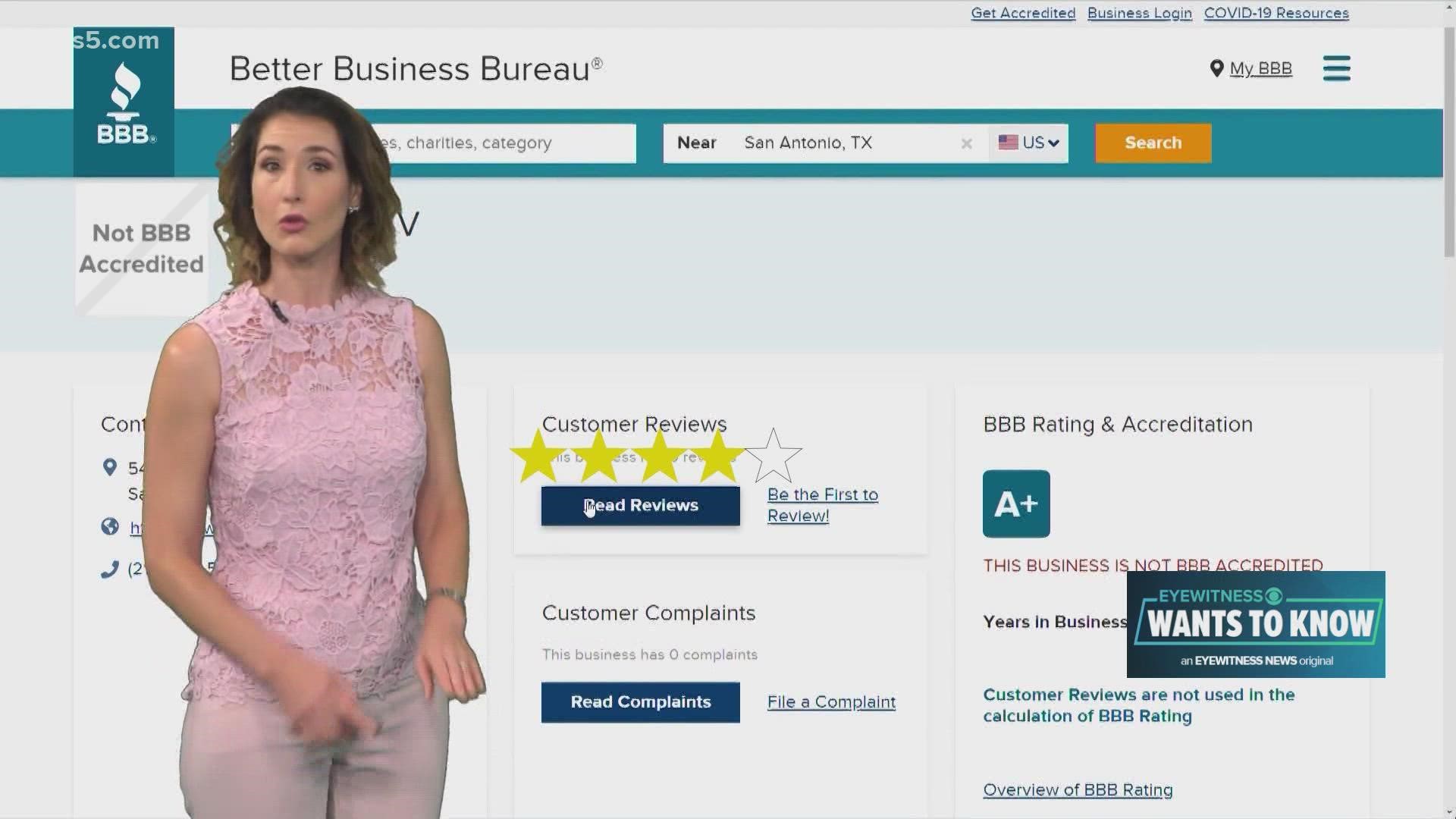SAN ANTONIO, Texas — The first thing people check when they look at a Better Business Bureau (BBB) profile is the rating.
It works just like letter grades in school do; A+ is the best and F is the worst. A lot of factors go into determining the letter grade.
“There’s a point system that we follow, including complaint outcomes, the size of the business...all these things factor into what the ratings look like,” said Jason Meza, regional director for the BBB.
Some businesses will have a "NR," or "No Rating," for reasons including insufficient information or an ongoing review. The BBB considers the following in the rating:
- The complaint history: This includes the number of complaints filed with the BBB, the size of the business, how the business responded to the complaints, if the complaints were resolved, if there is a pattern of complaints and the age of complaints.
- Type of business: The rating can be lowered if in the BBB’s opinion the business is a type of business that raises marketplace concerns or is believed to have operated in violation of the law.
- Time in business: The BBB considers how long the business has operated.
- Transparent business practices: The BBB can lower a rating if the business is not being transparent about its marketplace conduct including not giving complete information about products and services offered or ownership, also for using a false address or an address that cannot be determined.
- Failure to honor BBB commitments: A rating can be lowered if the business does not abide by a mediation settlement or an arbitration award.
- Licensing and government action: A rating will be lowered if the BBB knows about the business failing to require competency licensing or a pending/finalized government action against the business, which raises questions about the business’s ethics or reliability.
- Advertising issues: This includes misuse of the BBB name or marks, plus questions about truthfulness or accuracy of advertising claims.
Ratings can change, so look at them often.
You can also find if a business has been BBB-accredited. If it is, there will be a seal with a torch next to the business name. Here is what that seal means:
“A lot of verification, licenses. We scrub the profiles, make sure everything is top to bottom accurate,” said Meza. “On top of that, we do expect a lot from our businesses that are great. We expect them to be responsive to honor their promises, to advertise honestly, to do things, to be a trustworthy business in our marketplace.”
Not every business is eligible for BBB accreditation. A business must be able to meet, maintain and agree to the BBB Code of Business Practices to be eligible for accreditation. Business do pay dues to the BBB once they are accredited.
Look to see how long the business has been opened under the rating.
Find customer reviews in the middle of the profile. Reviews are based on a five-star rating system. Click to read about customer experiences with the business. All reviews are vetted.
“We want to make sure the review is legitimate,” Meza said. “We make sure there was a marketplace interaction.”
Reviews do not count towards the business's rating.
Find customer complaints in the center of the business profile under the reviews. You can also see if or how a business responded.
“If not responded to or handled in an efficient manner, it can, and many times does, affect letter grade,” said Meza.
Contact information for the business is on the left side of the page. You can also find more business details further down in the profile. It will list licensing information, type of business, parent companies, names of owners and managers plus who you should contact.
Every business has a free BBB profile. It is a red flag if you cannot find a business on the BBB’s website.
If you have a question for Eyewitness Wants To Know, email us at EWTK@KENS5.com or call us as 210-377-8647.

